syn. Modest Sphinx
Pachysphinx modesta (Harris, 1839)
Family: Sphingidae
Subfamily: Smerinthinae
Tribe: Smerithini
Hodges # 7828
Phlogenetic Sequence Number 227775
Immatures
Home Butterflies Details Adult Adults after Emerging
First Instars on 27 July 2014 - 8 mm long
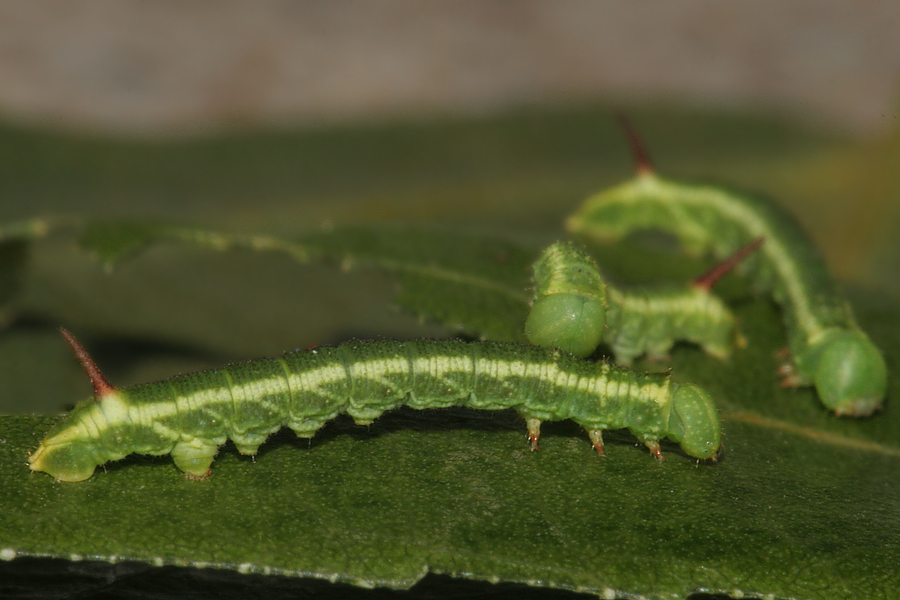
First Instars on 27 July 2014 - 8 mm long
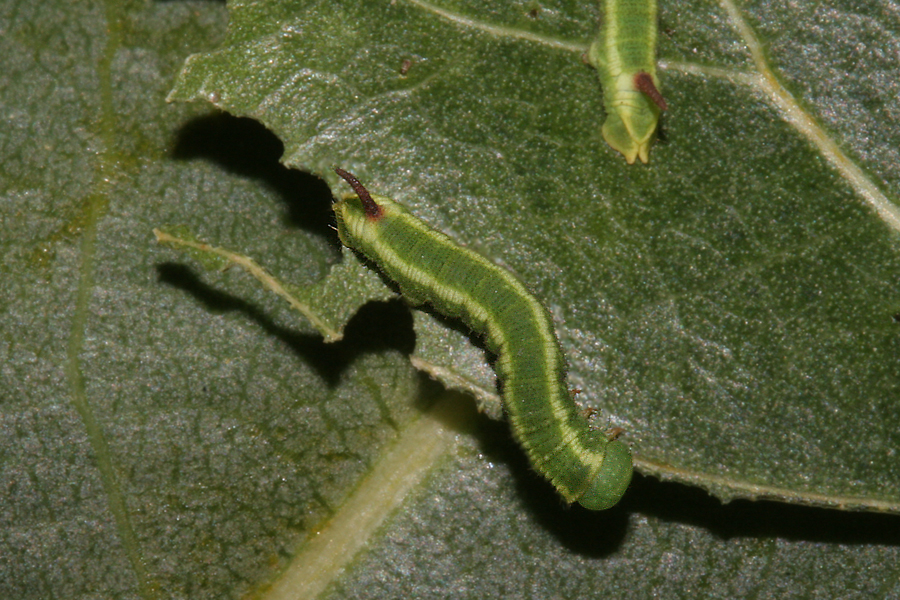
29 and 30th of July 2014 they molted to 2nd Instar
11 mm long
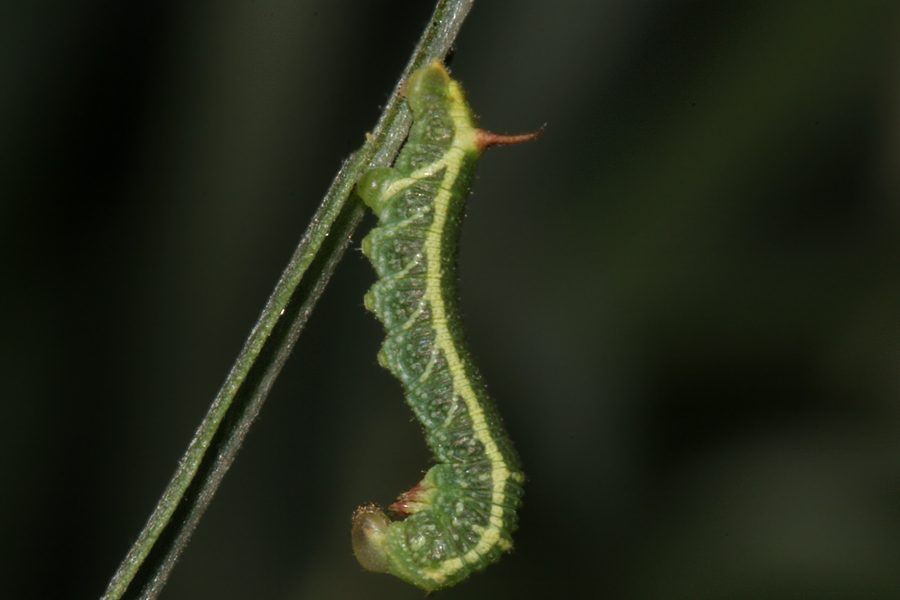
#1 Molted to Third Instar 3 August 2014
Photo taken 6 August 2014
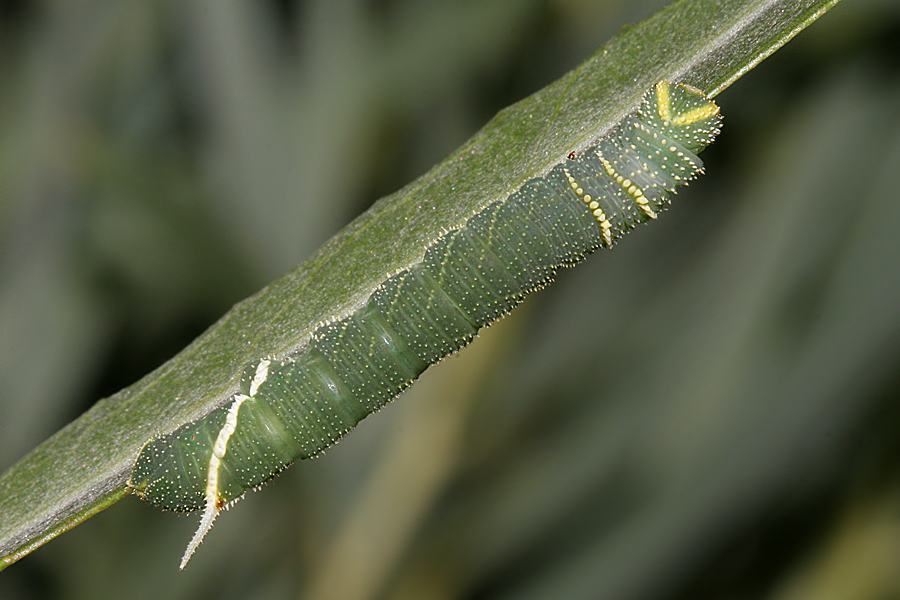
#1 Fourth Instar - 9 August 2014
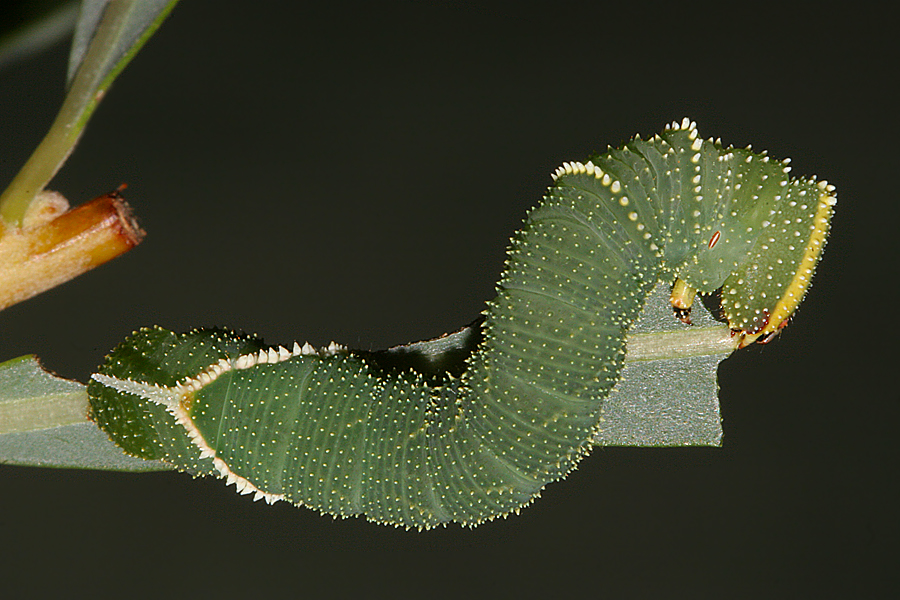
#1 Fourth Instar - 9 August 2014
25 mm long
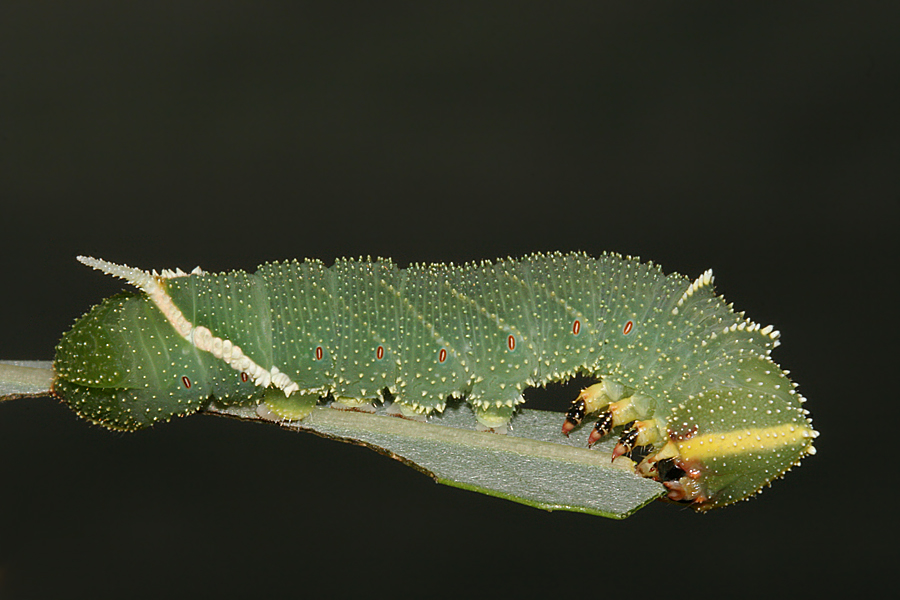
Face
#1 Molted to Fifth Instar afternoon of 18 August 2014
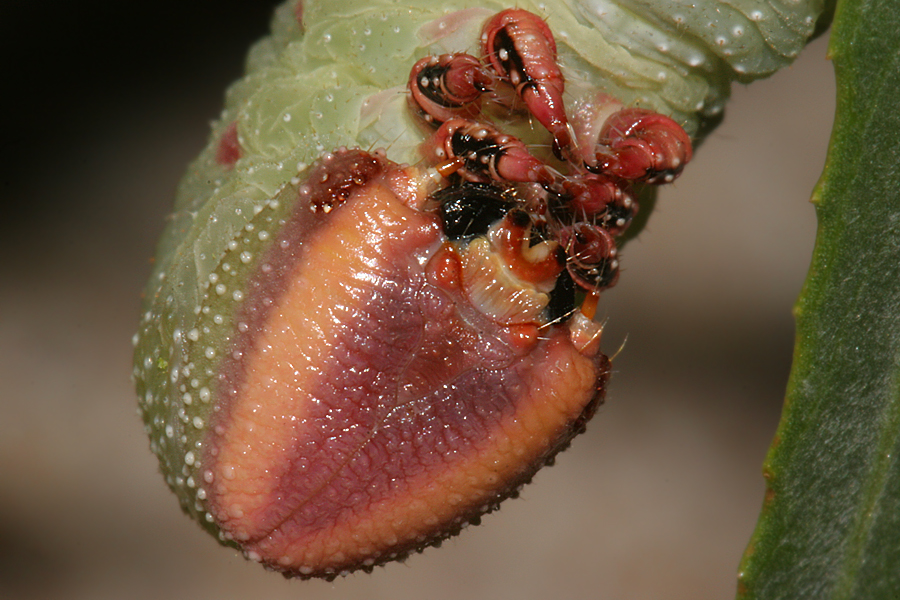
#1 Fifth Instar Feeding on Willow- 19 August 2014
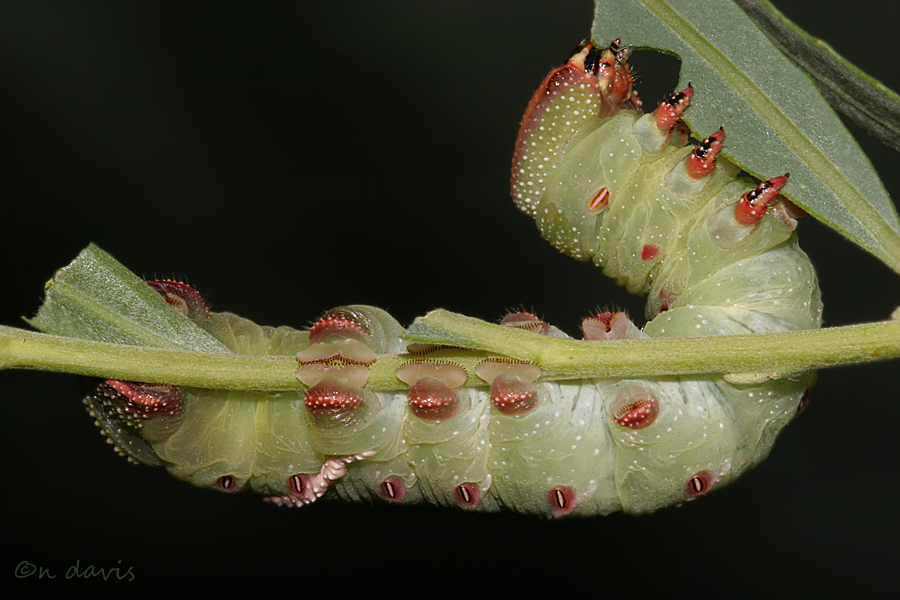
#2 Molted to Fifth Instar 20 Augusst 2013 - 45 mm long
Photo on 23 August 2013
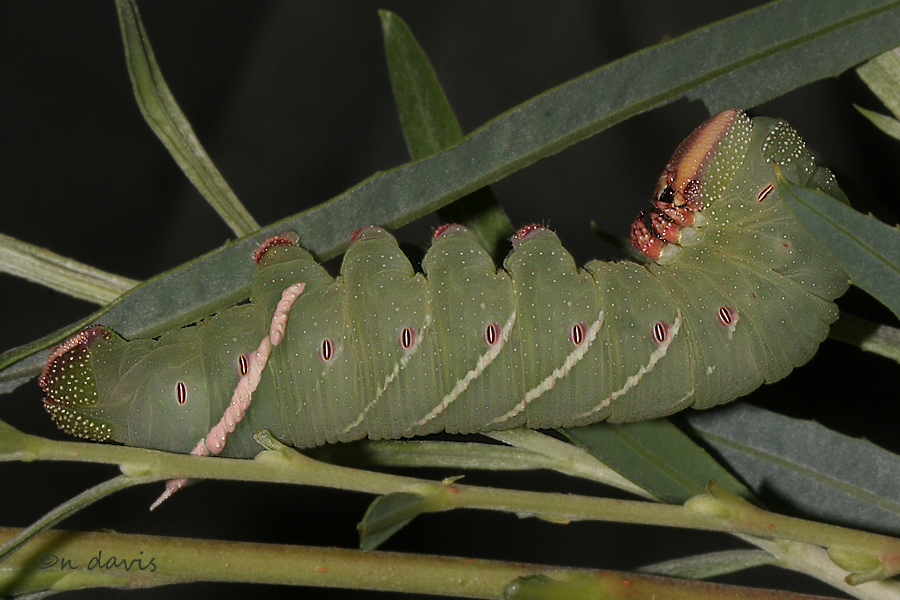
Photo on August 31, 2014
Fifth instar back began turning from green to brown 30 August 2014
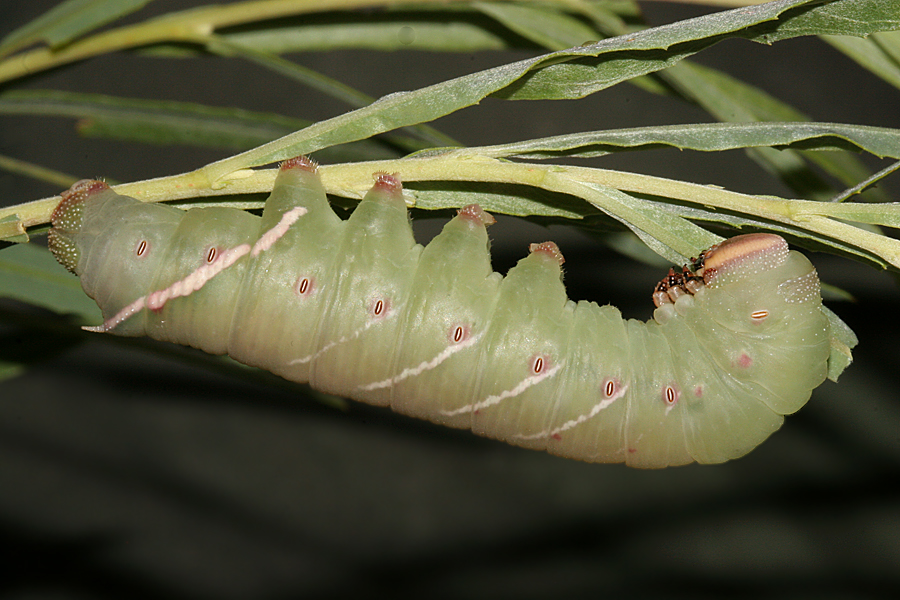
Photo on August 31, 2014 - close-up on back
Fifth instar back began turning from green to brown 30 August 2014
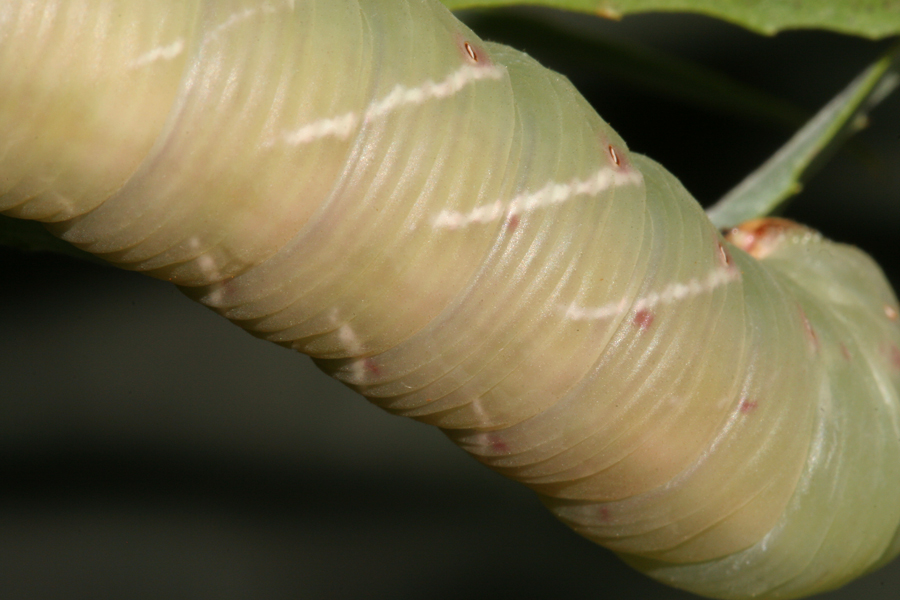
#1 Burrowing into Peat, Sand, Sawdust Mixture to Pupate
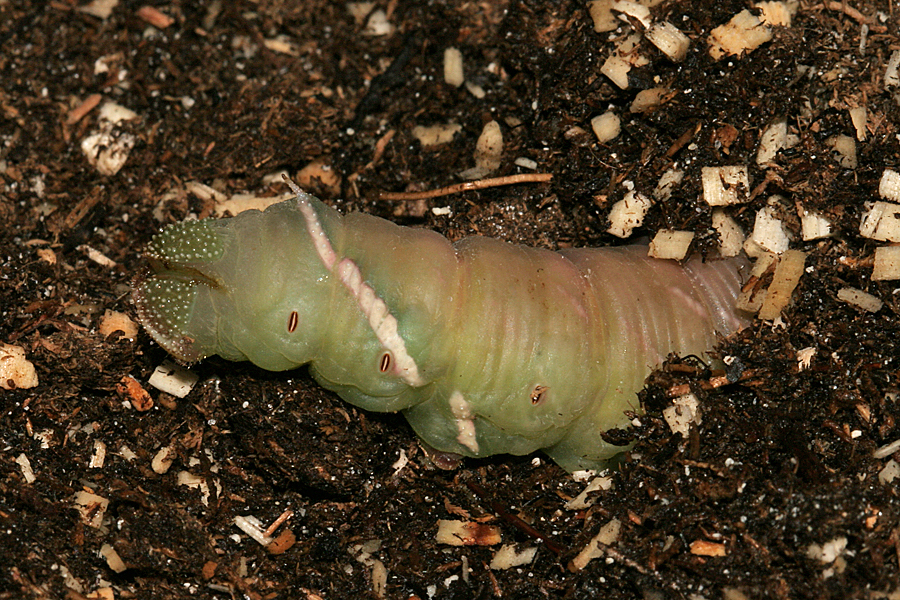
Pupae
1 - Male - 52 mm, 2 - Male - 47 mm, 3 - Female - 47 mm
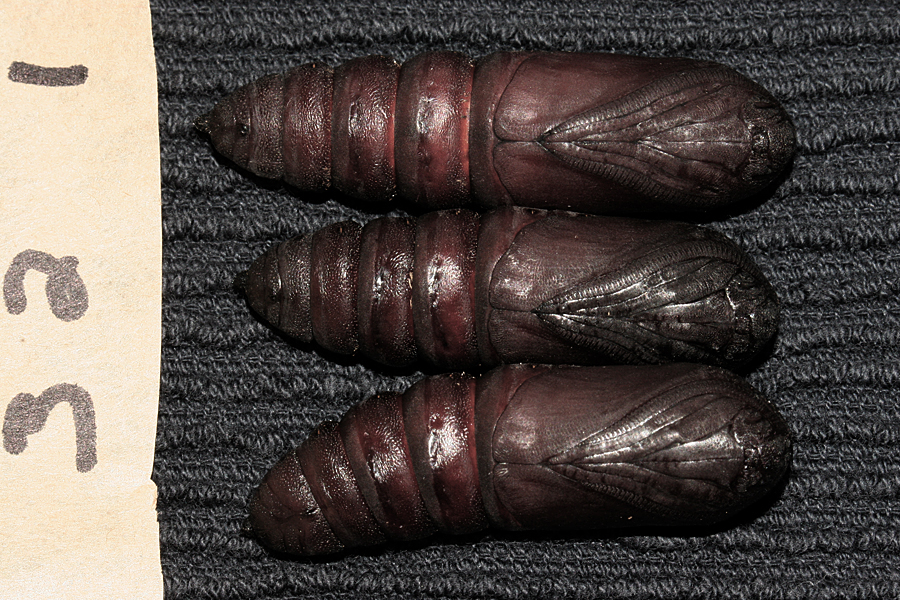
#1 Male- fourth segment from wing case
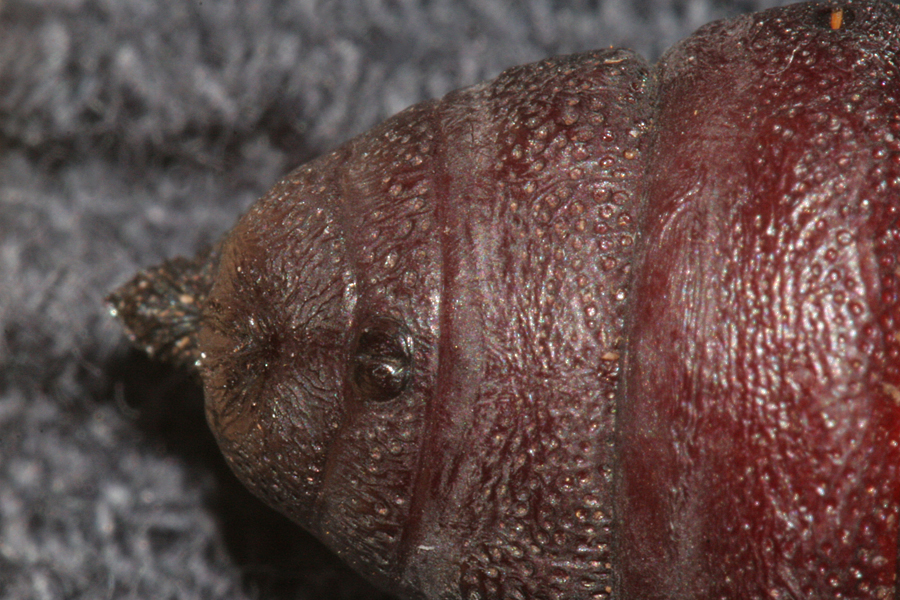
#1 - Male antennae
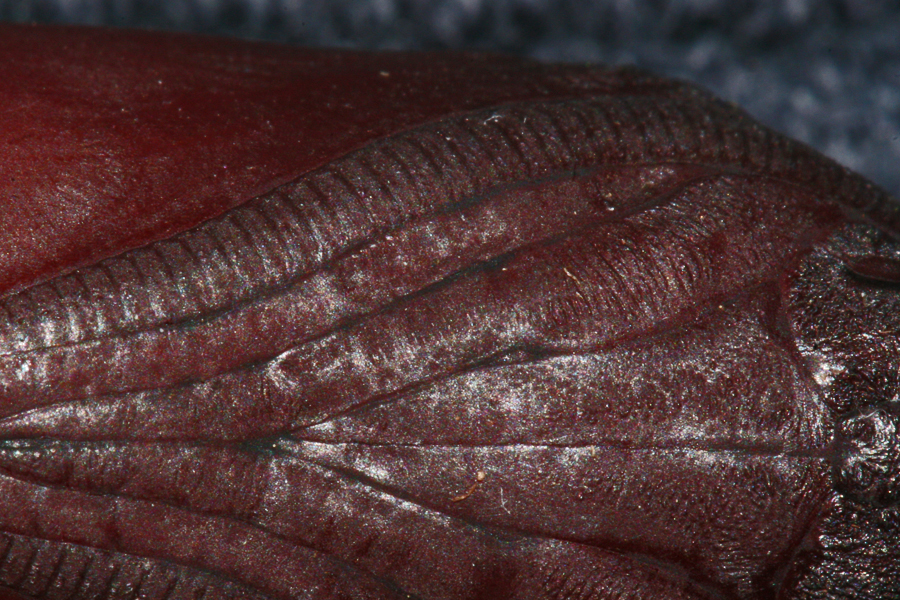
#2- Male 4th segment from wing case
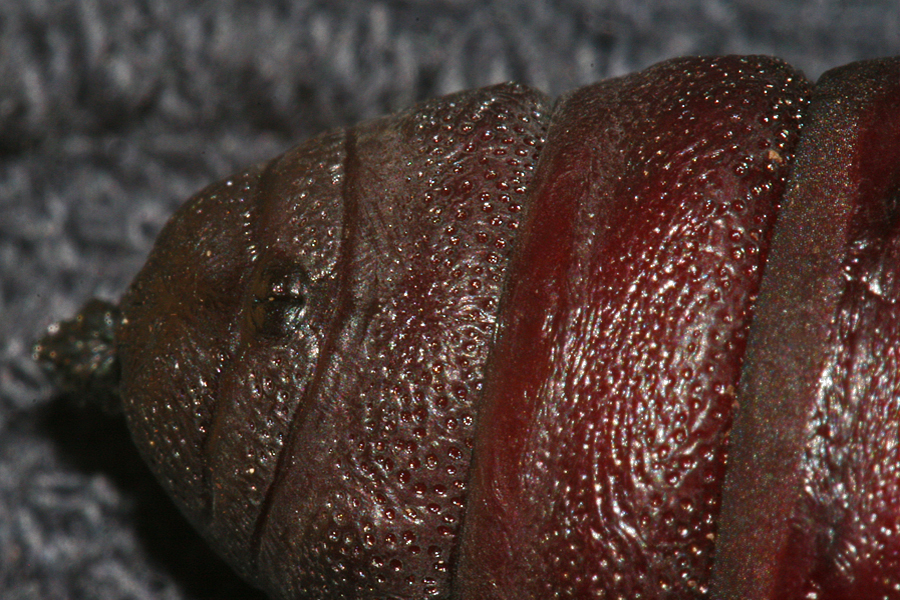
#2 Male -antennae
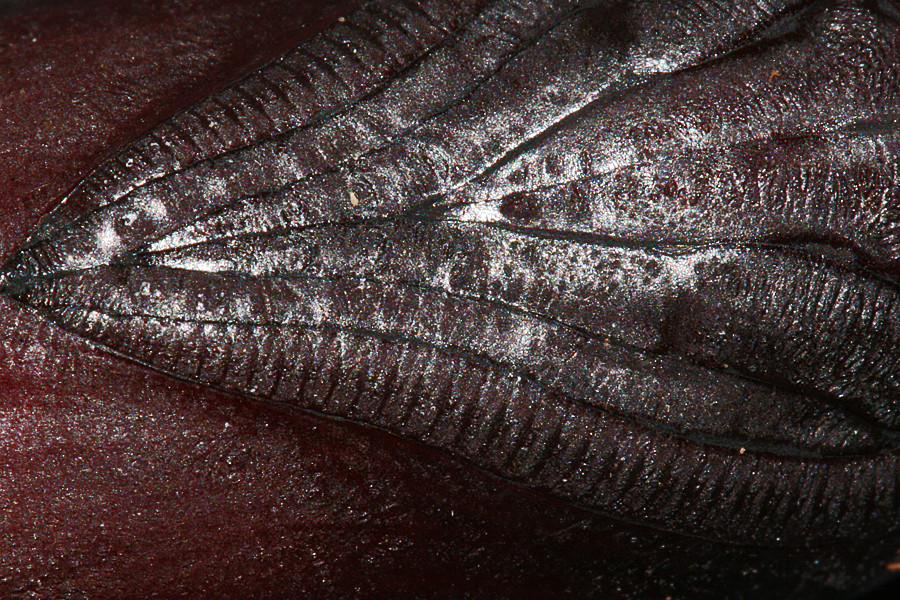
#3 Female - Fourth Segment interrupted with a vertical line
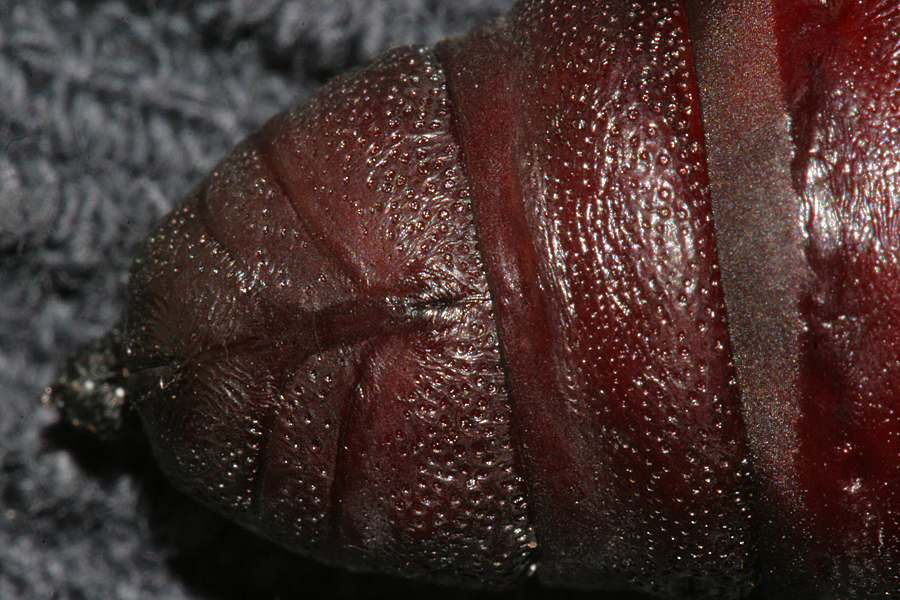
#3 Female - Antennae
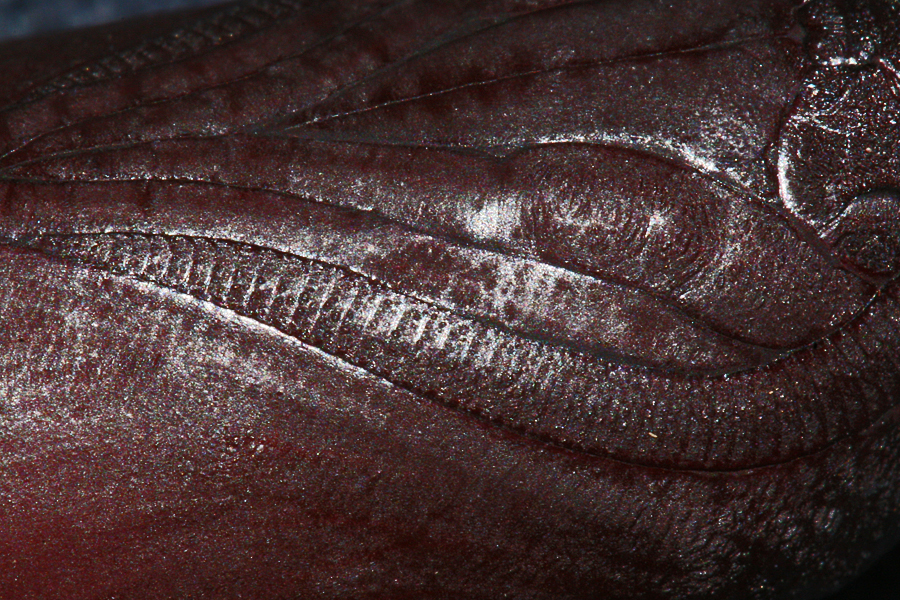
| Photos ŠNicky Davis Bob Mower located a female 16 July 2014 at the Jones Ranch Trailhead (Nebo Loop Road) Payson Canyon, Utah County, Utah and gave some to me to rear. I reared them using Coyote Willow-Salix exigua which they ate with no problems. I hurt one by trying to move it off the netting material of the lid and it eventually died. They are hooked onto the surface of the leaf so securely that if you try to move them it will tear their skin and kill them. If you need to move one to a new leaf, cut the old leaf around the caterpillar then carefully pin it to the new leaf using an insect pin. As soon as the caterpillar has moved to the new leaf, you can remove the pin and the old leaf. Photos First Instar on 27 July 2014 (27 July 8 mm) Second Instar on 29-30 July 2014 (30 July 11mm) Third Instar on 3-4 August 2014 - 6 to 8 days Fourth Instar 9-12 August 2014 - 9 to 11 days (9th August 25 mm) Fifth Instar on 18-23 August 2014 (45 mm on 23rd) Burrowing into peat mixture 6:00 P.M. 31 August 2014 Close-up photos to determine the sex of each pupae. #1 male is 52 mm long, #2 male is 47 mm long, #3 Female is 47 mm long. On Evening of 30th one larva was showing a change of color from gray-green to green-brown, especially on the top or back. On the afternoon of 31 August #1 walked off the plant and when placed back on, it walked back off. It made a little spot of purged liquid on the bottom of the container and began to rapidly walk around the bottom of the container. When touched, it became agitated and swung it's head back and forth. This indicates that the larva is ready to stop eating and find a place to pupate. Soon after #2 also walked off the plant and became agitated and began rapidly walking around it's container. A container filled with a mix of peat moss, sand and non-toxic sawdust (used for snake habitat) was prepared by dampening it slightly with water just enough that it wasn't dusty. Both caterpillars were placed in this container and a lid with ventilation holes in the top was secured. Also, a netting material was placed between the lid and the box. Both caterpillars began walking around the surface, then wiggled their way under the peat moss mixture. Three days later the last one burrowed into the peat right on schedule. They prepare an underground burrow and pupate in it then hibernate for the winter. Reported Host Plants
Range Map  |